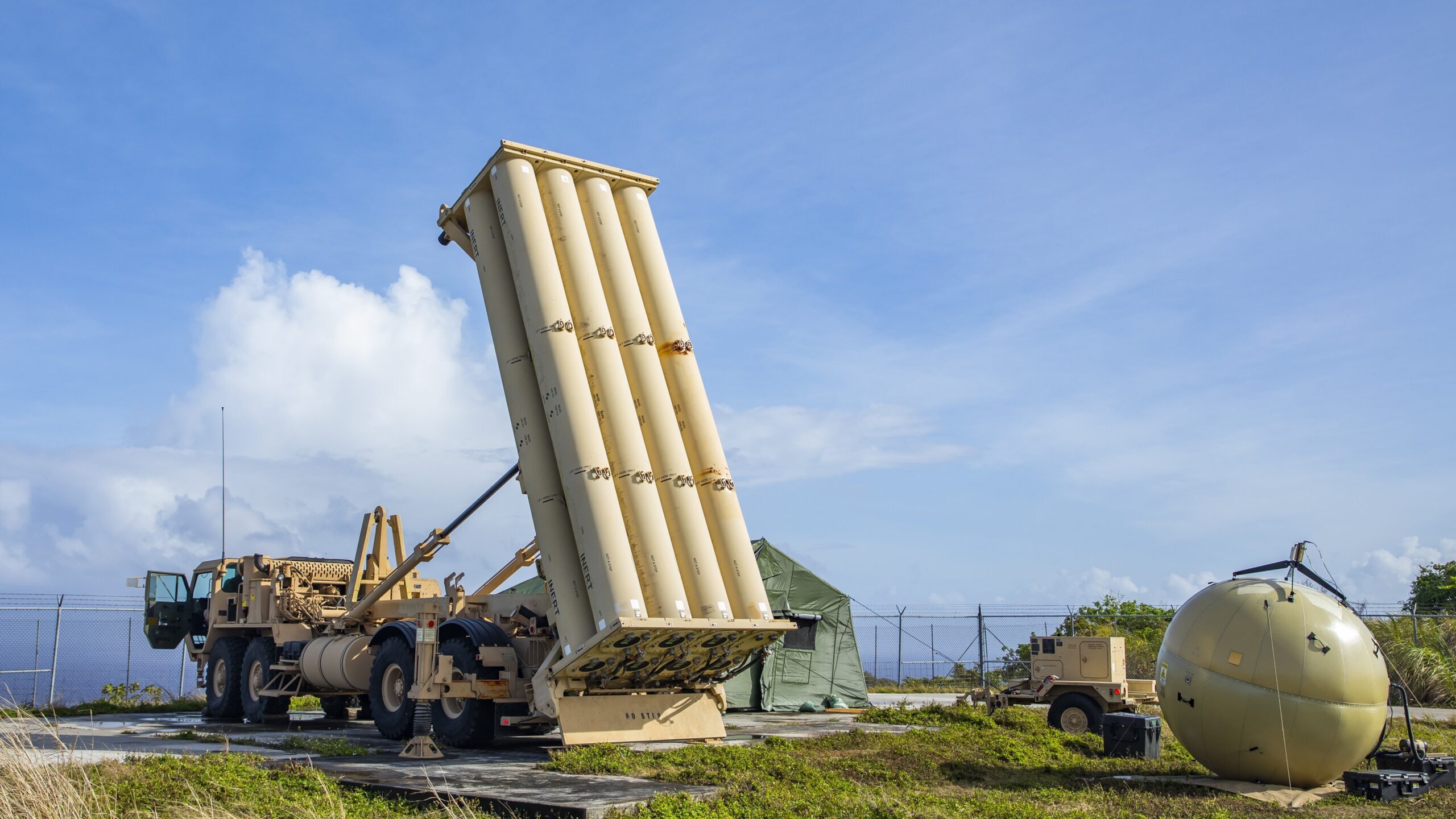
A THAAD launcher and Transportable Tactical Command Communications node emplaced at Rota International Airport at Rota, Commonwealth of the Northern Mariana Islands. (US Army/ Sgt. 1st Class David Chapman)
This article was updated 3/20/23 at 11:10 am EST to correct and update information about radars headed to Guam.
WASHINGTON — The Pentagon plans to take a continuous, iterative approach to providing the US territory of Guam with integrated missile defense architecture, but specifically aims to have capabilities to detect and defeat higher-end Chinese threats fielded by 2024, according to the Missile Defense Agency’s top official.
Appearing at the McAleese FY24 defense programs conference on Wednesday, MDA chief Adm. Jon Hill outlined his evolving Guam plans that expands defenses from solely focusing on a threat from North Korean ballistic missiles to higher-end ones from “near-peers” like China — think less predictable, faster cruise missiles.
“[It] is an incremental path. There is no end state,” he told reporters. “If you ask me what the [initial operational capability] IOC is, I’ll look at you and say there is no IOC because we’re going to deliver capability as it’s ready and we’re going to continue to build it out.” However, he noted that the first new “stream” of capabilities is poised to arrive on the island next year.
Hill’s comments come as Pentagon leaders spent the week discussing their roadmap to spend $842 billion in fiscal 2024. Their “Defense of Guam” plans have many moving pieces inside the MDA, Army and Navy budget requests that total nearly $1.5 billion, according to the Department of Defense Comptroller. For the MDA, that pot is $801.7 million — $632.1 million in research, development, test and evaluation activities, and $169.6 million in procurement. The services have not yet released all of their budget justification books that are expected to offer more details, but Hill offered a peak at what might be buried inside those documents.
For now, the plan will use the Army’s delayed Integrated Air and Missile Defense Battle Command System (IBCS) once it is ready to deploy it and the service has enough soldiers available to operate it. Tied in will be four Long Range Discrimination Radars placed along the “periphery of the island, so that gives us 360-degree coverage,” Hill said. LRDR is currently in Alaska and used as part of the US Ground-Based Midcourse Defense anti-ballistic missile system. The Army’s Lower Tier Air and Missile Defense Sensor (LTAMDS) and Sentinel radars will also be used.
MDA is also levering a version of the land-based Aegis ashore system to include the missile launchers and enhanced mobile radars dubbed the “AN/TPY-6.” (The “S” in SPY-7 radar stands for water while the “T” in Lockheed Martin’s TPY-6 radar refers to the transportable.)
“We’re taking radars that are normally on a deck house of a ship, or in a big facility like we have in Alaska, and we’re putting in erectable trailers so that we can move them around and emplace them,” Hill explained.
The evolving plan also includes a mix of launchers tied into the IBCS like the Terminal High-Altitude Area Defense, or THAAD, currently on the island, as well as Patriot launchers, and the aforementioned land-based variant of the Aegis vertical launch system. That list also includes the Army’s future Enduring Shield air defense missile launcher (also called the Indirect Fire Protection Capability Increment 2, or IFPC Inc 2) paired with either Raytheon’s ground-launched AIM-9X Sidewinder missile or a second interceptor not yet identified.
For now, Hill said his top two challenges for executing this plan are finding the right sites for each piece of equipment, especially since this is an island where people live and tourists visit, and dealing with “environmental electromagnetic interference issues.”
“We [have] land radars, we don’t want to screw up existing air operations,” Hill added. “We don’t want to conflict with medevac helicopters coming out of the hospital.”
He also noted the military would take steps to make the launchers not look so intimidating, or just be an eyesore, for locals.
“So, we have to take care of all those things, and we [are] committed to beautify them,” he said. “So we make [the] launchers look beautiful. And we’re gonna put big bubbles over the radars to keep them from looking so lethal, right? The reality is, that’s what it is.”






















